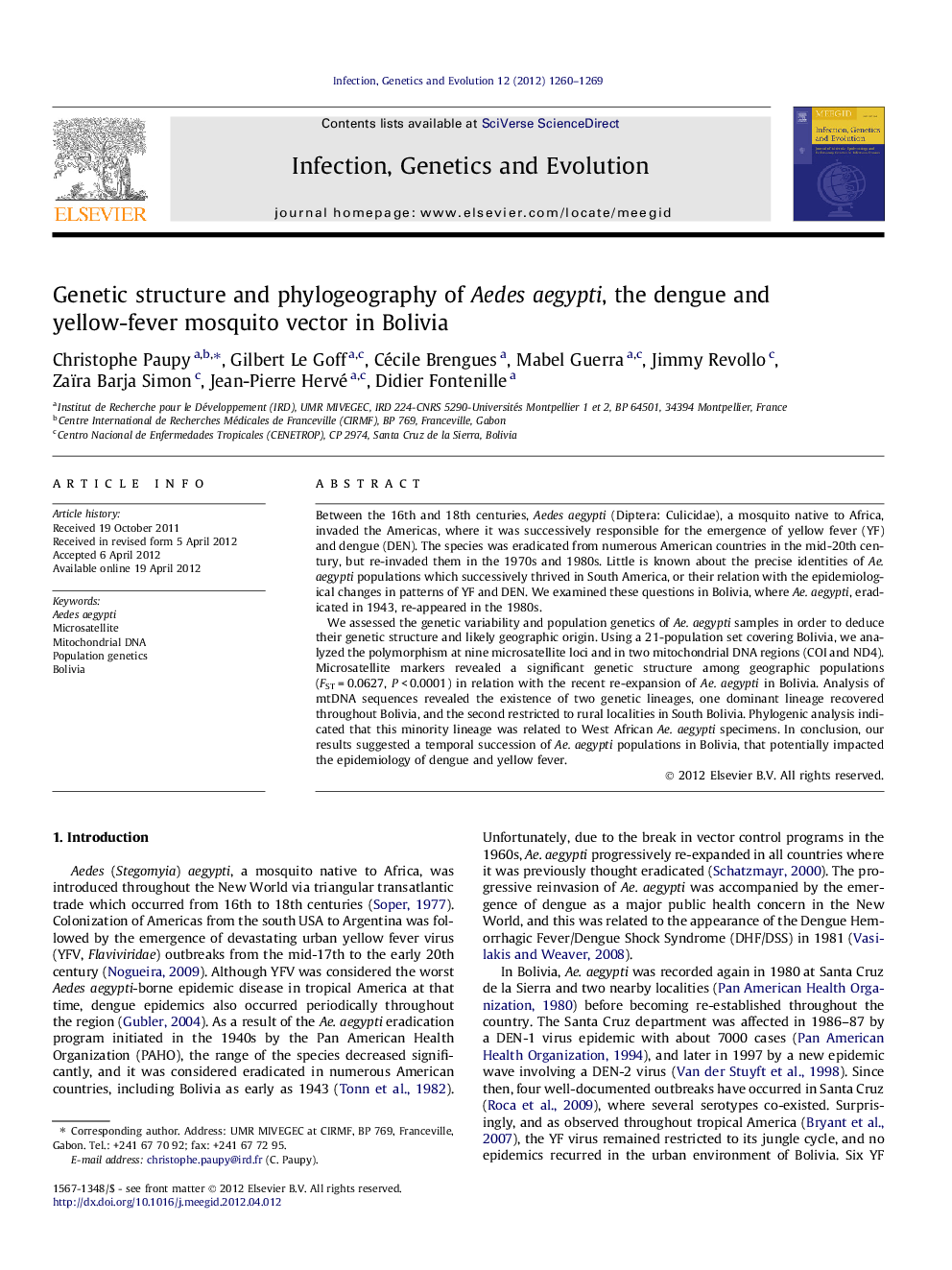| کد مقاله | کد نشریه | سال انتشار | مقاله انگلیسی | نسخه تمام متن |
|---|---|---|---|---|
| 5911392 | 1161363 | 2012 | 10 صفحه PDF | دانلود رایگان |

Between the 16th and 18th centuries, Aedes aegypti (Diptera: Culicidae), a mosquito native to Africa, invaded the Americas, where it was successively responsible for the emergence of yellow fever (YF) and dengue (DEN). The species was eradicated from numerous American countries in the mid-20th century, but re-invaded them in the 1970s and 1980s. Little is known about the precise identities of Ae. aegypti populations which successively thrived in South America, or their relation with the epidemiological changes in patterns of YF and DEN. We examined these questions in Bolivia, where Ae. aegypti, eradicated in 1943, re-appeared in the 1980s.We assessed the genetic variability and population genetics of Ae. aegypti samples in order to deduce their genetic structure and likely geographic origin. Using a 21-population set covering Bolivia, we analyzed the polymorphism at nine microsatellite loci and in two mitochondrial DNA regions (COI and ND4). Microsatellite markers revealed a significant genetic structure among geographic populations (FSTÂ =Â 0.0627, PÂ <Â 0.0001) in relation with the recent re-expansion of Ae. aegypti in Bolivia. Analysis of mtDNA sequences revealed the existence of two genetic lineages, one dominant lineage recovered throughout Bolivia, and the second restricted to rural localities in South Bolivia. Phylogenic analysis indicated that this minority lineage was related to West African Ae. aegypti specimens. In conclusion, our results suggested a temporal succession of Ae. aegypti populations in Bolivia, that potentially impacted the epidemiology of dengue and yellow fever.
⺠Genetic structure of Bolivian Aedes aegypti populations. ⺠A set of 21 populations sampled at macro-geographic scale. ⺠Nine microsatellite and two mtDNA markers. ⺠Strong genetic structure in relation to genetic drift. ⺠Two genetic lineages suggesting multiple introduction events.
Journal: Infection, Genetics and Evolution - Volume 12, Issue 6, August 2012, Pages 1260-1269